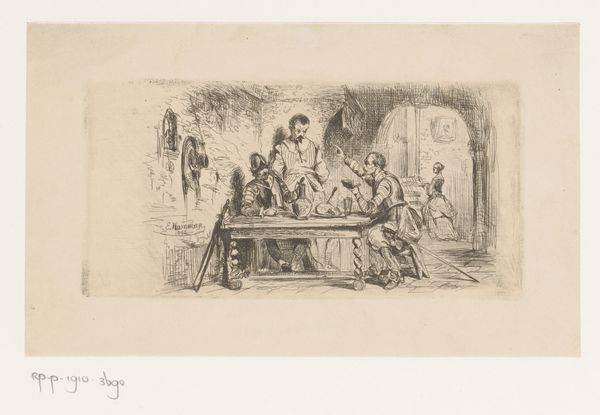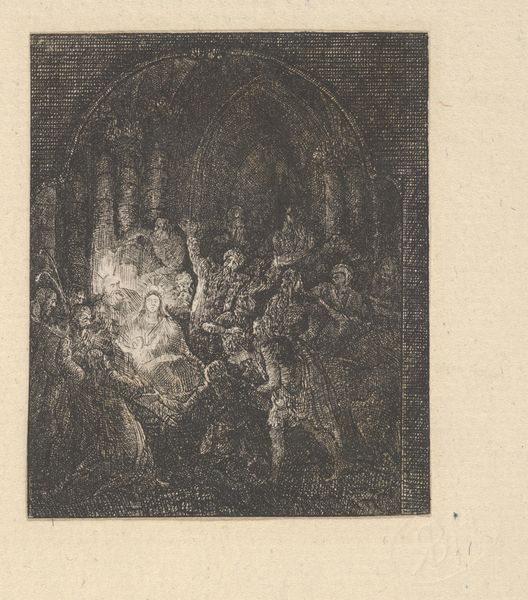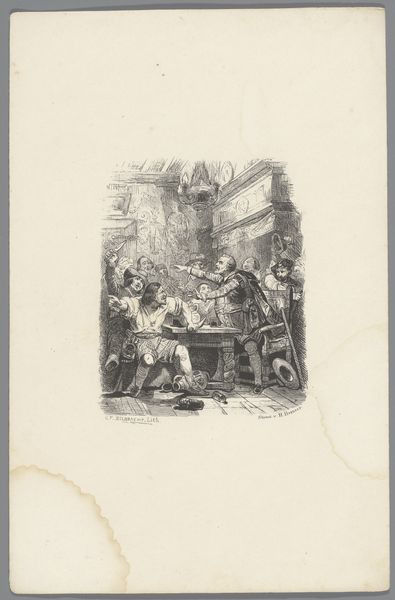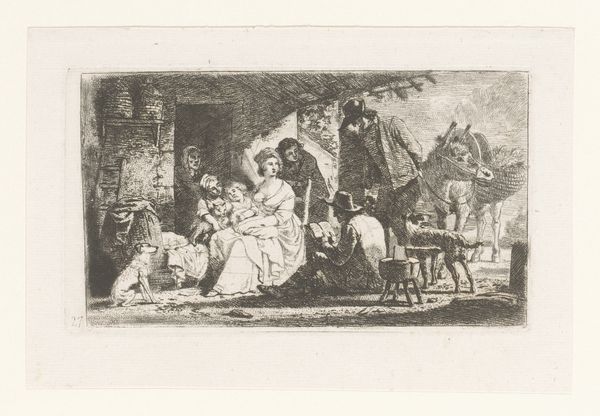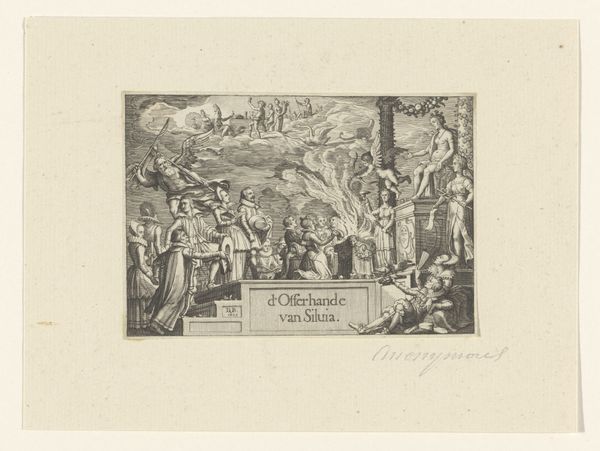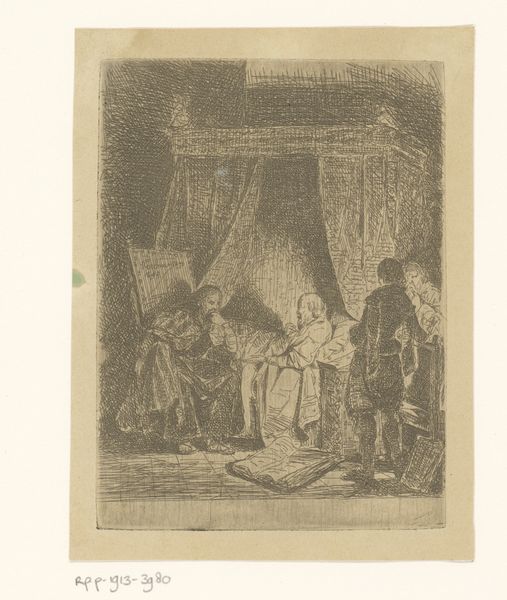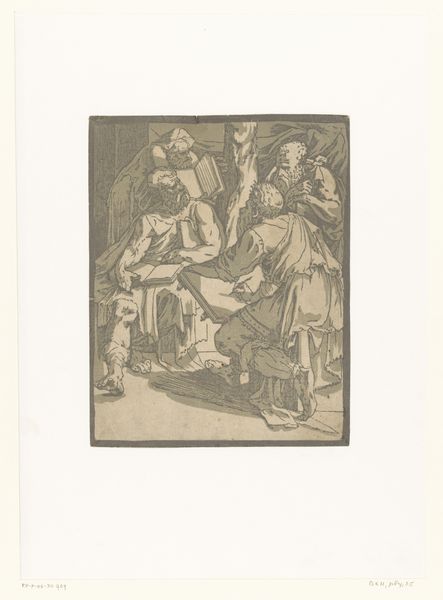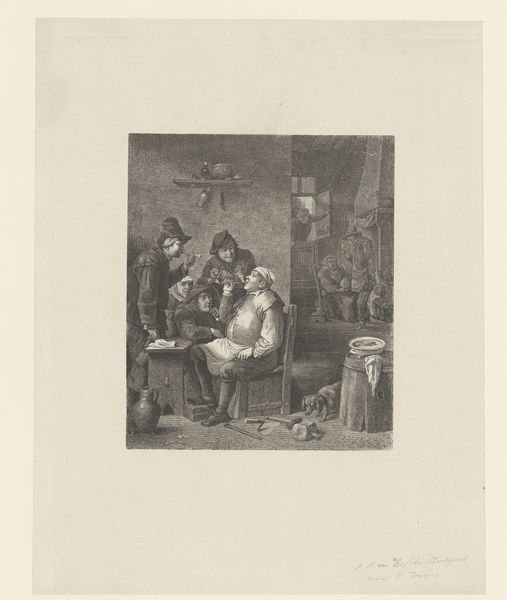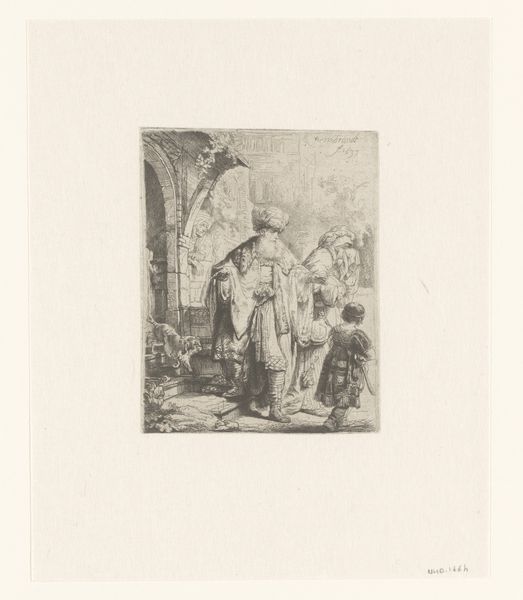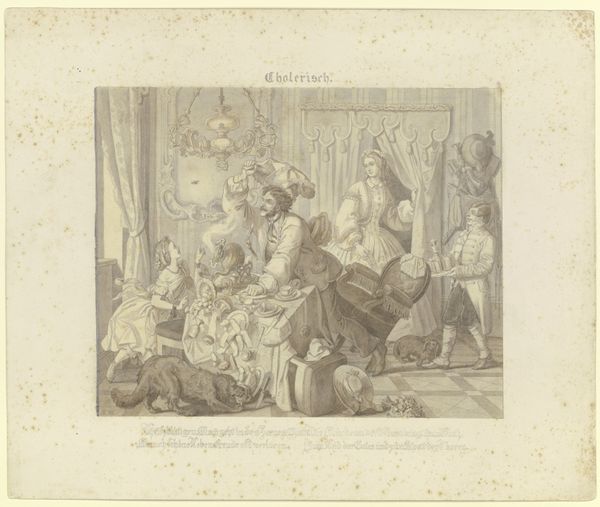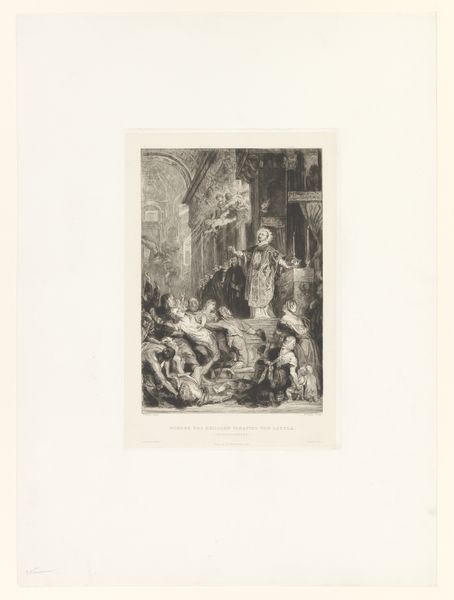
Dimensions: height 185 mm, width 235 mm
Copyright: Rijks Museum: Open Domain
Editor: Richard Byron's "The Death of the Virgin," created in 1777, employs intaglio and etching in print form. It’s remarkably detailed, even for such a small piece, creating a very intimate atmosphere surrounding the Virgin’s deathbed. What grabs you when you look at this, what story do you think Byron is trying to tell? Curator: It feels almost as if we're intruding on a profoundly private moment, doesn't it? The busyness of the etching, the baroque flair... but it all collapses into this small space, focused on her bed. Perhaps the most interesting aspect is what’s *not* depicted; instead of the assumed triumphant assumption, we see something quite ordinary. The grief of humanity encircles her; the details pull the imagined scene out of the realm of myth and push it into, maybe, a small room like the one we are standing in right now? What feelings come up for you? Editor: I feel a sense of both sadness and serenity, seeing the expressions of sorrow on the faces, but also the quiet acceptance of the inevitable. Do you think the medium, the etching, impacts how we view the scene? Curator: Hugely! Etching, particularly with such fine lines, lends itself to introspection. It's not bombastic like some history paintings could be. The delicacy and detail invite a slower, more considered viewing, like holding your breath to enter that final moment with everyone else in the room. It removes it from the grandiose of oil and marble. Byron's work really makes me consider mortality and mourning as a shared human experience; there is something beautifully leveling about his art. Editor: I never thought about it that way, but you are so right; there is something incredibly humbling and intimate in his rendering. I think I'm seeing it differently now. Thanks! Curator: Anytime! The best art continues teaching us across a lifetime, after all!
Comments
No comments
Be the first to comment and join the conversation on the ultimate creative platform.
